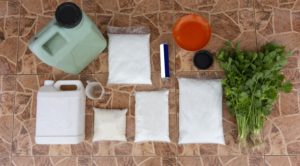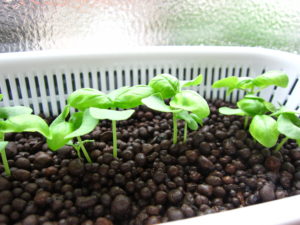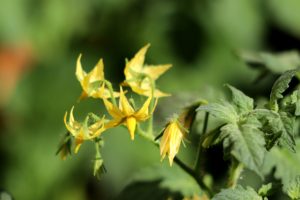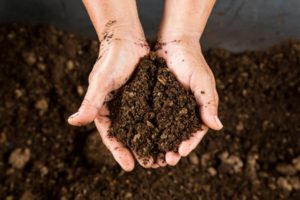DIY Sprouting and Cloning Dome
There are plenty of humidity domes for cloning and sprouting plants, but if you’re just starting out, you might not need to foot the bill. Or rather, you might not need to foot as much of the bill. All you need to do is make your own DIY sprouting and cloning dome. It’s actually not as hard as you might think, and you won’t need very many materials either.
In this article, we’ll go over how to create your own dome for sprouting and cloning hydroponic plants.
What You Need for a DIY Hydroponic Dome
So what do you need to get started? Surprisingly, it’s not much. In fact, you might even be able to make one out of materials you already have sitting around the house. Even if you don’t have the materials sitting around, they won’t cost much at all.
Let’s look at the basic materials you need for a DIY sprouting and cloning dome:
Tray, box, or terrarium
There are a couple different approaches you can take with this piece. The important thing is that you have a container that doesn’t leak, and is wide and deep (or shallow) enough for the amount of sprouts or clones you want to grow. Remember, you don’t need the same space or depth as you would for a full hydroponic grow tray.
Sprouts and clones don’t need to grow an expansive root system before you transplant them into your hydroponic system. There should be an established root system, but it won’t be like when your plants are mature. With that in mind, your container should be at least 3 or 4 inches deep (7.5 to 10.5 cm).
When it comes to width, that really depends on how many plants you want to grow. Ultimately, your sprouts should be a couple inches apart at least (around 5 cm). However, not every seed successfully sprouts, and not all are as strong. For most plants, count on thinning out the sprouts. In the end, you may end up thinning out around ¼ to ⅓ of your sprouts.
Lid or top
If you use something like an aquarium fish holder, it probably already comes with a lid. The same goes for if you use something like a plastic storage container. However, you might find a perfect tank, sans lid. So what can you do if your sprout container doesn’t come with a lid?
There are several options. In fact, you may even be able to use press and seal kitchen wrap to cover your dome container.
Grow medium
When it comes to growing medium, you have a ton of choices. Starter cubes and rockwool are favorites among hydroponic growers. A diy sprouting and cloning dome is versatile, since you set it up yourself.
However, for this type of starter dome, there are a few types of growing medium that are ideal. Keep in mind that the ideal grow media also might vary depending on what kinds of plants you want to grow, and what the best environment for them is.
For the method we’re talking about, here are the best types of grow media to use:
- Rockwool or starter cubes
- 50/50 perlite and vermiculite mix
- Coco coir mixed with vermiculite
- Hydroton (clay pebbles)
- Clay aggregate pebbles mixed with perlite, vermiculite, or coco coir
In our example, we’ll be using a 50/50 mixture of perlite and vermiculite. That’s because this will provide an even mix of moisture retention and drainage.
Grow lights
If you’re starting from seed, you won’t need grow lights right away. If you want to speed up the process, look at our guide on methods of germination.
There’s a lot to learn about when it comes to lighting for hydroponics. If you’re just starting out, we suggest looking at our guides for grow lights for hydroponics and lighting for plant growth stages.
Here’s the shorter answer for what kind of grow lights you need for this DIY plant starter dome:
You will need a grow light sooner or later. For the sprouting and/or cloning stages, you should give your plants mostly blue light. Once they begin maturing and flowering, you‘ll switch to grow lights that emit on the red and orange part of the spectrum.
The good news is, this means you can get grow lights much more easily, and for much cheaper. As long as it provides enough light, a fluorescent grow light does just fine. Otherwise, you can also use a Metal Halide HID light, or LED grow lights set for blue light.
Seeds or cuttings
When it comes down to which plants you grow, it comes down to preference, and what resources you have at your disposal. If you’re not sure what to grow, check out our guides on the best plants for hydroponics.
When you start rooting or sprouting your plants, you can choose to start from seed, or from clones. While many plants do very well when cloned, there are some that just grow better from seed, like lettuce.
If you plan on germinating plants from seed, you should also plan on giving them a few extra days to root and sprout.
Nutrients
Here’s a nice surprise: when it comes to nutrients, you really don’t need them yet! Some growers do swear by adding some nutrients into the water for their sprouts and clones. However, you should be aware that more nutrients doesn’t always mean better growth. If you do want to add nutrients to water for young plants, stick to around ¼ of the recommended dosage.
There are a couple things aside from nutrient solution that you might want to add. For instance, adding b12 for young seedlings is a favorite method for some hydroponic growers. Rooting hormone (containing auxins or hormulin) is a great way to increase your chances of success if you’re transplanting or creating clones.
Setting it up
Now it’s time to set up your DIY sprouting dome. Make sure you have all your materials nearby, with a clean surface to work on. If you’re using a grow medium like rockwool, make sure you soak it for at least 24 hours before starting.
In our case, we’ll be using a perlite and vermiculite mix. When you use a mixture of different grow media, you should make sure you know how much your base container holds. The container we’re using holds about 1 gallon.
You don’t need to fill your container up all the way. In fact, it’s best if you leave a few inches of space between the top of your growing medium and the lid. Keep in mind that if your lid is fairly flat, you’ll need to provide more space. Without the extra space, it’ll be hard for plants to grow properly.
Learn about types of growing medium.
Fill it with growing medium
After you make sure you have enough growing medium, start filling your sprouting tray. If you’re using a looser media, like perlite or coco coir, it’s best to dampen it while you’re adding it in.
Since we’re using a perlite and vermiculite mix, we’ll measure it out first to make sure we have equal parts of each. Then, we mix each part together to get a uniform consistency.
After mixing, we add it to the container and make sure we have enough room left at the top.
Prepare for seeds
We suggest germinating seeds ahead of time. It makes the process go much faster once your sprouting dome is set up. If you’re not sure how to germinate seeds, check out our guide on the easiest way to germinate seeds.
You can then use your finger or a toothpick to make small indentations for seeds. Try to give seeds a couple inches of space between each.
Add seeds
Next, it’s time to add seeds to your sprouting tray. Place seeds in the small dents you just made in the grow media. It’s okay to put a couple seeds in each site. In the case that each seed sprouts, you can thin them out later.
Cover the sprouting dome
Now, get the cover or lid you’ll use for your little greenhouse. Covering the container is fairly straightforward. However, if you’re using a lid with vents, there’s an extra step you need to take. Don’t leave all the vents open at first. Clones and sprouts like more humidity than mature plants.
Check out this guide for more on how humidity affects plants.
If your lid is simply built with a lot of vents, like the one we’re using, you need to cover them. One of the best ways to do this is by using plastic kitchen wrap to cover most of the holes.
Over time, you’ll gradually uncover the vents. This helps prepare your plants for your hydroponic system.
Add light
Depending on your setup, there are a couple ways to add light. You can set your little grow box by a window, although you need to make sure the plants get enough light. That’s why a lot of growers prefer to use grow lights. With grow lights, you can control how much light your plants get, and keep a consistent lighting schedule, regardless of the weather.
Let your plants grow
Soon, you’ll see your plants start sprouting and growing upward. At first, they have a couple leaves. These are embryonic leaves, and they’re actually part of the seed. Seeing these is a good sign, but they’re not actually true leaves. True leaves come later, and are generally bigger than embryonic leaves.
If you’re growing from seed, you need to wait around 2-3 weeks before you transplant your sprouts. If you’re using clones, you also need to wait a couple of weeks. Your clones are establishing root systems, and they need to have solid roots before you move them.
Time to transplant
Once your plants are ready, transplant them into your hydroponic system.
Signs seedlings are ready to transplant:
- 2-3 inches tall (5-7.5 cm)
- Have 2-3 ‘true leaves’
- Sturdy stems
- No discoloration
Signs clones are ready to transplant:
- Solid root growth
- Expanding root system
- Signs of growth on plants – increased height, new leaves, etc.
Remember, a week or so before you transplant, you should start opening up the ‘dome’ or lid on your chamber. Start with a couple hours each day. Then, start uncovering the vents. This helps your plants adjust gradually before transplanting. If your seedling or clones are on a different lighting schedule than you plan on using for your hydroponic system, that needs gradual adjustment too.
Then, just make sure your hydroponic system is set up and stable before you start transplanting. Be gentle when you move plants from one tray to another. After you have the plants in your hydroponic system, that’s really all there is to do!
Frequently Asked Questions
Do I need a pump for a sprouting tray?
For this method, you don’t need a pump. In many DIY sprouting and cloning dome setups, you won’t need a pump either. However, if you choose to use something like an aeroponic clone dome, you will need a pump to spray the roots.
How can I make sure my clones root?
Rooting, or striking, can be one of the toughest parts of cloning plants. While it’s entirely possible to get clones to grow roots on their own, you can up your chances of success. If you’re struggling with clones, we recommend using a rooting hormone to jump start the process.



